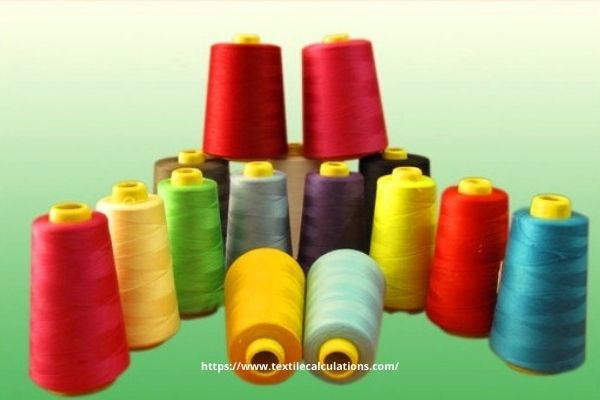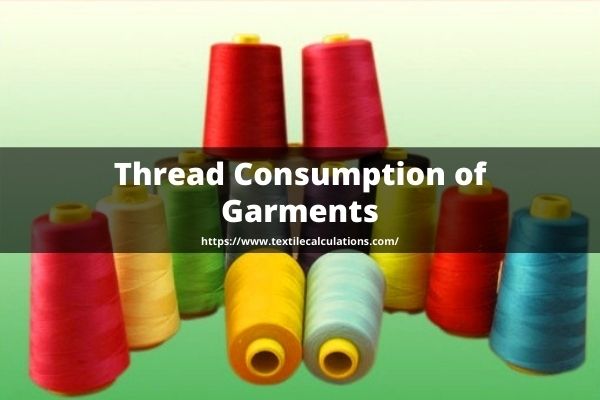Thread Consumption:
Sewing thread consumption is very important for the garments costing. Sewing thread is required for seam sewing/assembling, overlocking, various types of stitching, buttonholing, label attachment, etc. Clear conception in sewing thread consumption calculation of garments is essential for a merchandiser to estimate the total number of cones required for a specific order and to purchase the sewing thread accordingly. There are some ways people may generally use to calculate the amount of thread in a seam and hence the thread consumption of garments·

Thread consumption depends on many factors. Likes-
- Stitch Classes,
- Stitches per inches (SPI)
- Fabric thickness
- Thread tension
- Thread count (thickness of sewing thread)
You may like also: Sewing Thread Consumption Formula with Example
Thread Consumption of Garments:
Thread Consumption formula, = M×SQ×TPI×P
Where,
M= Measurement.
SQ= Sewing quality.
TPI = Thread per inch.
P= Part.
Sewing thread is required for seam sewing /assembling, overlocking, various types of stitching, buttonholing, label attachment, etc. Besides, it is important to know the amount of thread consumed in a sewn product. We often need to figure out thread consumption of various items like shirts, Shorts, Tank tops and Pants, etc. Thread consumption means how much thread we need to stitch a product. Sewing thread consumption formula with example are discussed below:
Thread consumption can be determined in several ways. To calculate the amount of thread in a seam, you can:
- Measure the actual amount of thread consumed in a specific length of the seam.
- Calculate the thread consumption by using mathematical stitch formulas based on the thickness of the seam and the number of stitches per inch.
- Calculate the thread consumption using A&E’s ANECALC spreadsheets.

